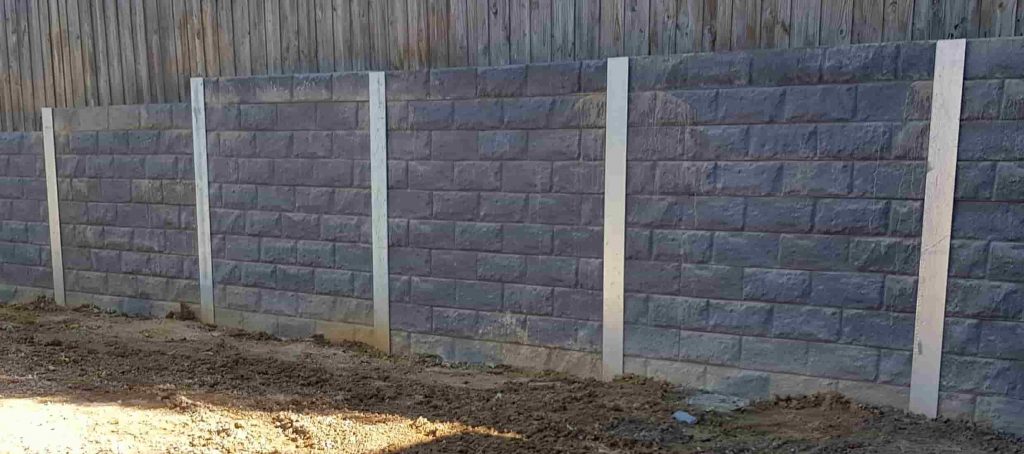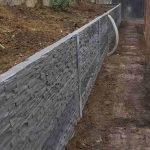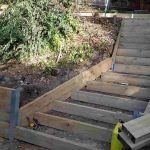Introduction
Building a retaining wall is not practically visual appeals; it's about functionality, land management, and enhancing your residential or commercial property's value. Whether you're handling a sloped backyard or simply want to create distinct levels in your garden, understanding the Step-by-Step Retaining Wall Installation Process is important. In this thorough guide, we will break down everything you need to know, from selecting materials like timber sleepers, concrete sleepers, and H-beams to guaranteeing that the setup process is carried out like a pro.
What Is a Maintaining Wall?
Definition and Purpose
A retaining wall is a structure developed to limit soil to abnormal slopes. Its main purpose is to handle changes in elevation by keeping back earth, http://ricardoajmc728.raidersfanteamshop.com/exploring-various-products-used-by-maintaining-wall-professionals thereby preventing erosion and providing stabilization.
Types of Retaining Walls
There are several kinds of keeping walls, consisting of:
- Gravity Walls: Count on their own weight to withstand pressure. Cantilever Walls: Use take advantage of through a base and stem. Sheet Stack Walls: Employ thin sheets driven into the ground. Anchored Walls: Use cables anchored into the soil for extra support.
Why Construct a Keeping Wall?
Enhancing Property Aesthetics
Retaining walls can transform an otherwise plain landscape into visually appealing tiers. They can serve as flower beds or ornamental functions that enhance your home's curb appeal.
Preventing Erosion
One of the main factors property owners set up keeping walls is to prevent soil disintegration. By keeping back earth, they secure gardens and lawns from being removed throughout heavy rains.
Creating Functional Space
If your lawn has steep slopes, a well-designed retaining wall can develop flat surfaces for patios, gardens, or perhaps play locations for children.
Materials for Retaining Walls
Timber Sleepers
Advantages of Lumber Sleepers
Timber sleepers are popular due to their natural appearance and ease of installation. They're often used in domestic tasks where visual appeals matter many.
Disadvantages of Wood Sleepers
However, wood can rot gradually if not appropriately dealt with or preserved. It might also be susceptible to bugs like termites.
Concrete Sleepers
Benefits of Concrete Sleepers
Concrete sleepers use resilience and strength that wood can not match. They're resistant to rot and bugs and can hold up against harsh weather condition conditions.
Drawbacks of Concrete Sleepers
On the drawback, concrete can be more expensive than timber alternatives and may need professional setup due to its weight.
H-Beams
H-beams are robust structural components that supply extraordinary strength for massive keeping walls or business projects.
When to Utilize H-Beams
These beams are perfect when dealing with substantial elevation modifications or when integrating in unsteady soil conditions.
Tool Requirements for Installation
Essential Tools for do it yourself Installers
To effectively develop a retaining wall, you'll require different tools:
Shovel Level Tape Measure Hammer Power Drill Compactor Machine (for larger walls)Optional Tools
While not necessary, having these tools on hand can make your task simpler:
- Wheelbarrow Excavator (for bigger setups) Safety Gear (gloves, goggles)
Step-by-Step Retaining Wall Setup Process Explained
Step 1: Preparation Your Project
Before you dive into installation, take a while to plan your task thoroughly.
Choosing the Right Location
Make sure you select a location that requires stabilization while thinking about local zoning laws concerning wall heights and proximity to home lines.
Calculating Dimensions
Measure how tall the wall needs to be based upon the slope's gradient and guarantee that you account for drain which plays a vital function in maintaining stability over time.
Step 2: Event Necessary Permits
In lots of areas, setting up a retaining wall may require licenses from local authorities. Always examine guidelines before beginning construction!
Step 3: Preparing Your Site
Clearing debris from the area where you prepare to set up the wall makes sure that you have ample space for digging and assembling materials without obstruction.
Marking Your Layout
Use stakes and string lines to outline where your wall will go. This assists picture the final structure before any digging begins.
Step 4: Digging Trenches
Dig trenches deep enough (usually around 12 inches) so that your base product sits strongly listed below ground level-- this supplies stability versus lateral pressure from soil behind it.
Step 5: Putting up Base Material
Adding gravel or crushed stone at the bottom of your trench help in drain while creating an even surface for laying your first course of blocks or timbers.
Compacting Base Material
Using a compactor maker helps attain optimum density which prevents settling later on!
Step 6: Laying Your Very First Course
If you're using timber sleeper or concrete sleeper blocks, start laying them down at one end of your prepared trench-- utilize a level frequently!

Ensuring Levelness
Check frequently with your level tool; this action is crucial as it sets the tone for all subsequent layers!

Step 7: Building Upwards
Continue stacking blocks according to producer directions-- stagger joints in between courses includes strength while preventing fractures over time!
Drainage Solutions
Proper drainage behind your retaining wall avoids water buildup which might cause disastrous failure down the line!
Weep Holes
Installing weep holes permits excess water trapped behind masonry structures like concrete sleepers escape safely rather of triggering breaking concerns later on on!
Making Corrections
During installation errors take place! Here's how you can correct common issues:

Hiring Specialists vs do it yourself Approach
When should you hire professionals? It all boils down personal experience versus task complexity!
If security concerns occur (high slopes). Complex designs needing specialized knowledge. You merely lack time/resources!On simpler projects though? Numerous pick do it yourself technique resulting significant savings -- simply guarantee appropriate research beforehand!
Maintenance Tips for Long-lasting Keeping Walls
Once installed correctly ongoing maintenance makes sure longevity:
Regularly examine walls trying to find cracks/damage. Maintain correct drain by cleaning weep holes regularly! 3 Keep landscaping clear away from base making sure no moisture retention happens around foundation areas!FAQs about Retaining Wall Installation
Q1: What materials can I utilize for my retaining wall?
You have options like timber sleepers, concrete sleepers, H-beams, stones and so on, however each features its pros/cons depending upon preferred aesthetics/structural requirements!
Q2: How deep need to I dig my trench?
Usually objective around 12 inches deep-- however always factor in frost lines if suitable based upon environment conditions impacting soil freeze/thaw cycles where you live!
Q3: Can I do it myself?
Absolutely! Nevertheless-- if not sure speak with specialists gain insight prior starting work-- you desire everything stable & & safe and secure afterwards right?
Q4: The length of time will my retaining wall last?
With excellent design/maintenance anticipate timber walls lasting about 20 years; while concrete alternatives might last upwards of 50 years quickly depending quality set up properly initially too!
Q5: Do I require permits before building?
Most likely yes! Constantly examine municipal regulations relating to height/property line constraints before beginning work-- it conserves headaches later down road trust us here folks !!
Q6: How do I prevent water build-up behind my wall?
Install appropriate drain systems consisting of weep holes/buried pipelines directing excess rainwater away from structure itself-- that'll keep things dry hence lengthening life-span profoundly going forward too !!
Conclusion
The Step-by-Step Retaining Wall Installation Process Explained functions as both a blueprint and informative guide whether you're looking at DIY techniques using wood sleepers or professional-grade styles using concrete sleepers or H-beams! By following this structured method along with extensive planning/preparation-- you'll find yourself equipped not just with understanding however self-confidence knowing precisely what steps lie ahead throughout construction phases making dreams reality quicker than ever thought possible before today! So roll up those sleeves get going changing landscapes one brick/block/sleeper at time-- it's time make those visions come true !!